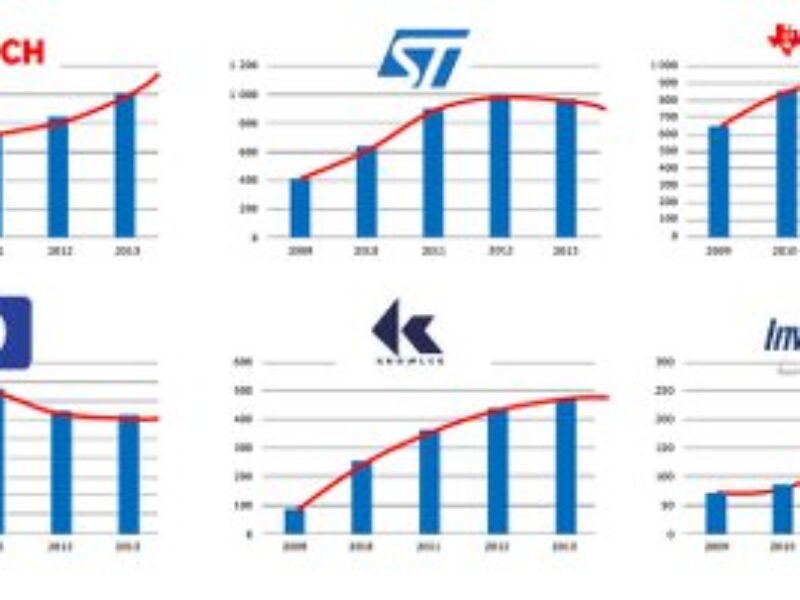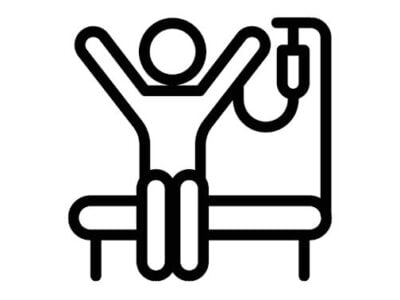
That is the opinion of analysts at Yole Developpement, which has just prepared a status report on the MEMS industry.

MEMS market forecast ($ billions) by application. Source: Yole. To see larger version of chart click here.
In 2013 the MEMS market was worth $12 billion and grew by about 10 percent but this hide the fact that unit shipments are growing at a much faster rate but accompanied by a 7 percent decrease in the average selling price (ASP). This results from the “success” of MEMS penetration into consumer electronics and mobile phones and tablet computers in particular – where competition is becoming brutal.
Although the 10.4 percent annual growth looks good established players are struggling to continue that growth. “If we look at the top MEMS players, we see that STMicroelectronics, while still producing at high volume, is struggling to stop the decrease of the price of its own products – even though it’s shown impressive growth over the last several years, and reached US$1B sales in 2012 – the first MEMS company to do so,” said Eric Mounier, senior analyst at Yole, in a statement.

MEMS sales of major companies 2009 to 2013. Source: Yole. To see larger version of chart click here.
Meanwhile, Texas Instruments’ DLP sales are flat, since pico projection applications are long to take off, at least for consumer applications, and the professional/commercial projection market is growing at slow speed. Also, Hewlett-Packard, the major inkjet heads player, has seen sales decline, as have most other inkjet heads companies. Newcomers are adopting a fabless model as exemplified by such companies as InvenSense and mCube.

Examples of TSVs used in MEMS. Source: Yole. To see larger version of chart click here.
It is notable that novel manufacturing techniques are starting to have an impact on the MEMS market with mCube succeeding to removing the need for bond wires throught the use of TSVs.
However, despite the warning signs for the established players Bosch has used manufacturing and diversification to rise to the top of the industry. Bosch’s MEMS automotive business has paid for the building of a major dedicated MEMS wafer fab and it is now compensating for its low margins in its consumer activity. One could argue, along similar lines to those which run in digital ICs, that staying in the consumer market has become bad business.
Certainly the gains and volumes achieved in consumer deployments of MEMS are now starting to drive sectors with better margins such as medical, automotive, industrial and defense.

Top 30 MEMS players in 2013 with sales marked for mobile applications. Source: Yole. To see larger version of chart click here.
However, it is also the case that sensor fusion and software to create complete remote functionalities are also becoming customer requirements and this has driven a spate of recent acquisitions (see Audience, InvenSense buy up sensor fusion software firms).
Related links and articles:
News articles:
Bosch leads Yole’s MEMS market top 30 ranking
Yole predicts IC price pressure in IoT roadmap
Yole compares smallest 3-axis accelerometers
Will sensor fusion drive neuromorphic computing?
 If you enjoyed this article, you will like the following ones: don't miss them by subscribing to :
eeNews on Google News
If you enjoyed this article, you will like the following ones: don't miss them by subscribing to :
eeNews on Google News




